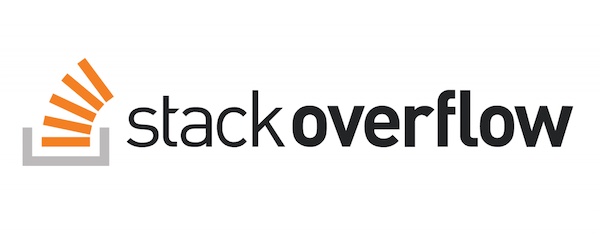While rural towns are a great place to get some fresh air, it’s a fact that attracting quality talent for a growing business can be difficult. With a smaller local population, young businesses have to fight for both clientele and staff.
If you are a business owner in a rural area, you understand the challenges of building a business in a place where viable candidates are few and far between. At first glance, it can seem impossible. Thankfully, however, it’s not.
Nowadays, finding high-quality work from talented individuals is easy—if you’re willing to look at remote work setups. This article will cover the benefits of employing off-site workers, tips on hiring remote staff, and collaboration tools to ensure a cohesive workflow.
Advantages of hiring remote workers
Making the move away from a traditional office of in-house workers may seem like a big step, but the benefits of hiring a remote workforce are significant. These are just a few of the top perks.
Lower expenses
Hiring a remote worker is more cost-effective in many cases. It takes a lot of money to find and onboard on-site employees, especially if you use a headhunter. Those corporate recruiters will often do a good job finding talent, but they can cost a lot of money. Further, once you find and hire an on-site employee, you have to pay the costs of maintaining a workspace for them.
Larger talent pool
Another benefit of hiring remote workers is having an endless funnel of talented individuals to choose from. When you need to hire someone to fill an on-site position, you usually only have a small handful of local options. And if you do decide to look outside the local candidate pool, you may have to pay a lot more for relocation—and you may even have to offer additional incentives to get talented employees to move from a big city. When you hire remotely, on the other hand, you can choose from a wide range of talented potential hires and settle for only the best.
Less Stress
It’s no secret that coming into the office day in and day out can be stressful for any worker. That stress can be compounded for employees who have to deal with the long commute times and sparse public transit options that exist in rural areas. The same isn’t true for off-site employees. It is observed that remote workers experience less stress than individuals that work in the office.
Increased Productivity
Not only are remote workers healthier, but studies show they are also more productive. For example, one survey of a travel company’s call center found that remote workers made 13.5% more calls than the staff in the office. There’s a lot to be said about eliminating distractions by taking the office out of the equation completely.
Greater Creativity
Susan Cain’s book Quiet: The Power of Introverts in a World That Can’t Stop Talking argues the point that quiet, separate space can drive more creative and productive results from introverted employees. A remote work situation allows your employees to tailor their workspaces for maximum creative output—and that creativity can come in handy as your organization works to stay lean and agile in a rural corporate landscape.
Effective Strategies for Hiring Remote Workers
Now that the advantages to hiring remote workers are clear, it’s time to focus on how to actually hire them. Though you’ll want to tailor the hiring and onboarding process to fit your company specifically, these steps should give you a good baseline plan.
1. Know what you are looking for before you hire
You wouldn’t hire an on-site employee without a firm job description and performance expectations in place, and the same is true of hiring for remote workers. The survival of your rural business depends on keeping a smart, capable workforce, so before you even start looking at remote candidates, sit down with your executive team and find out what projects you will assign to your remote worker and what qualifications they should have.
For example, if you are looking for lots of high-end content, you may want to add “English or Journalism degree” to your list of preferred qualifications. There are plenty of good writers out there without degrees, but if you’re looking for solid research and fact-checking skills, a relevant degree will increase the likelihood that you’ll find trained and capable candidates.
On the other hand, if you are looking for a programmer who knows their way around CSS, you’ll likely care more about coding experience than specific degrees.
What is important is that you know exactly what you need before you start searching. Don’t limit yourself, either—remember: when you set up a remote work situation, you open the door to a country-wide candidate pool that has a wider range of specialization than might be available in the city or town where you’re located.
2. Look at several sources to find candidates
It’s easy to send out a hiring call on social media, pick the first applicant, and call it a day—living in a place with a small pool of workers likely has you eager to jump on the first qualified candidate that comes your way. However, when it comes to finding the best remote worker for your company, casting a wider net will be your best bet. There are several noteworthy websites where you can find excellent freelancers.
Fiverr

If you are low on budget and looking for some video animation or design work, give Fiverr a try. This site is best for small, temporary projects rather than long-term initiatives—many Fiverr freelancers are often inundated with gigs and may not be looking for an extended commitment.
Stack Overflow

Looking for help with software development? Stack Overflow is a great place to hire a remote programmer and to establish a more long-term relationship.
Outsourcely

Outsourcely offers help from remote workers that specialize in almost anything you could imagine, including design, web development, programming, software development, mobile applications, content creation, customer service, sales, finance, translation, and more. No matter what you need, Outsourcely has you covered.
Upwork

Upwork is similar to Outsourcely in that it attracts a wide range of freelancers to help you with projects you can manage remotely. If you are looking to develop an ongoing relationship with a remote worker, Upwork is also a stellar option.
3. Interview your potential remote employees
Many small- and mid-size businesses make the mistake of hiring someone before they interview them, but you must avoid that pitfall at all costs. A large part of success as a rural business is keeping up clear and friendly relationships with your local clients—and in order to do so, you need to maintain a united internal team that works well together. As such, finding a good fit for both function and culture should be a top priority for your business.
Since you will be conducting most of your meetings virtually, it’s best to set up the interview virtually as well. This will ensure you can communicate with each other and know what to expect as soon as you are ready to dive into completing projects together.
Tools to help you manage remote workers
Now that you know how to find the best remote employees, the last piece of the puzzle is acquiring the right tools to help you manage them.
Because you’ll likely be relying on internet-connected programs to maintain communication with your new remote employees, it’s important to look at the services and network infrastructure available in your area. A decade or two ago, that landscape might have been somewhat discouraging—rural towns aren’t generally known for being tech-centric or digitally connected.
Thanks to government agencies like the US Department of Agriculture’s Rural Utilities Service, however, the telecommunication infrastructure of rural America is much stronger than it once was. Entities from the White House on down recognize the importance of giving rural economies the tools and utilities necessary for growth and success. The Federal Communications Commission has even acknowledged the connectivity challenges facing rural businesses and begun taking steps to remedy those disconnects. As a result, organizations in rural areas are finally getting access to the technology and infrastructure they need.
So, once you’ve confirmed that your company’s business solutions are up to snuff, you can start scouting out programs to bring your off-site employees into your internal workflow. Here are the most important elements to nail down—and a look at which tools can help.

Virtual communication
It’s absolutely vital that you have an efficient way to communicate with your remote workers. As a baseline, set up an account with Skype, Google Hangouts, or Join.me. In most instances, it’s best to be familiar with multiple services, as it’s possible to experience glitches. For those times when quick written communication is needed, turn to a program like Slack. Slack lets you chat one on one or in a group setting. It helps you get the message across as quickly and efficiently as possible.
Project management
If you are hiring remote employees to handle design, digital marketing, copywriting, content production, and/or publication, a detailed project management program is an absolute must. Programs like CoSchedule or Asana will help you organize your production goals from beginning to end. All of your employees—either remote or on-site—can access the same calendar and tasks with their own individual login, so you won’t have to worry about miscommunication affecting your workflow.
Time tracking
In the event you are paying your remote workers an hourly wage, you will need a way to accurately track their hours. Some remote work platforms, like Upwork, offer native tracking, but not all do. If you plan to maintain a long-term partnership with a remote worker, it’s a good idea to invest in some sort of time-tracking program. That’s where apps like When I Work and Toggl come in handy. Both apps keep track of remote employees’ hours to make accounting and payment easier.
File sharing
File sharing is a common practice in the office and between remote employees. If you are sharing anything larger than a small photo or document, find a file sharing program. Dropbox works wonders on these occasions, as does Google Drive.
Each of these tools will help you keep your operations running smoothly, no matter how far away your employees are.
Rural businesses do indeed face some special challenges when it comes to attracting talent. However, with the increase of social and digital tools, recruiting and managing remote workers can be the successful answer to your problem of finding the right employees to staff your growing business.
Greg Digneo writes for TimeDoctor.com, a time monitoring and productivity monitoring software designed for tracking hours and productivity of remote teams. If you would like to see where you and your team are spending your time during work, try Time Doctor free for 14 days.


